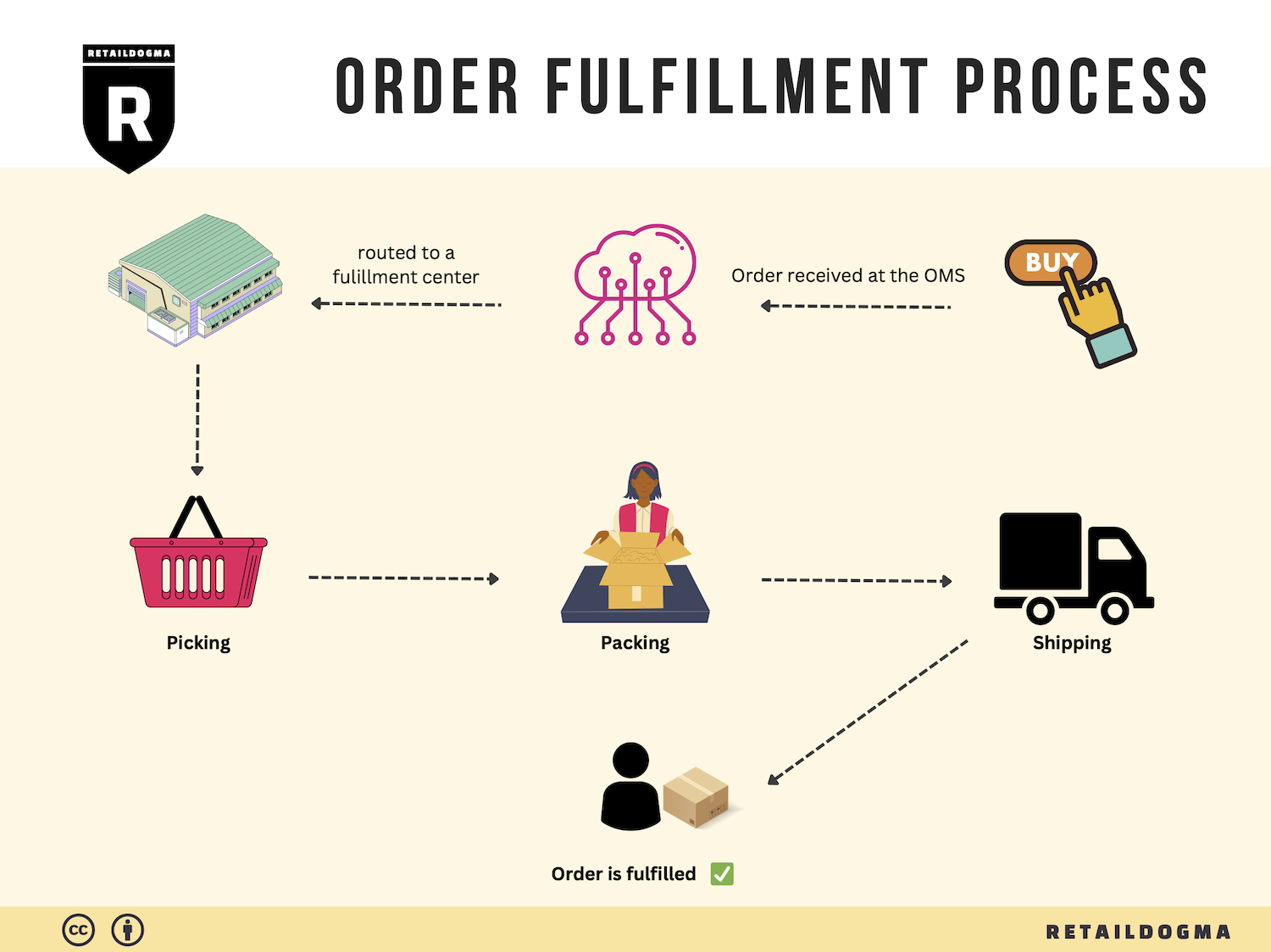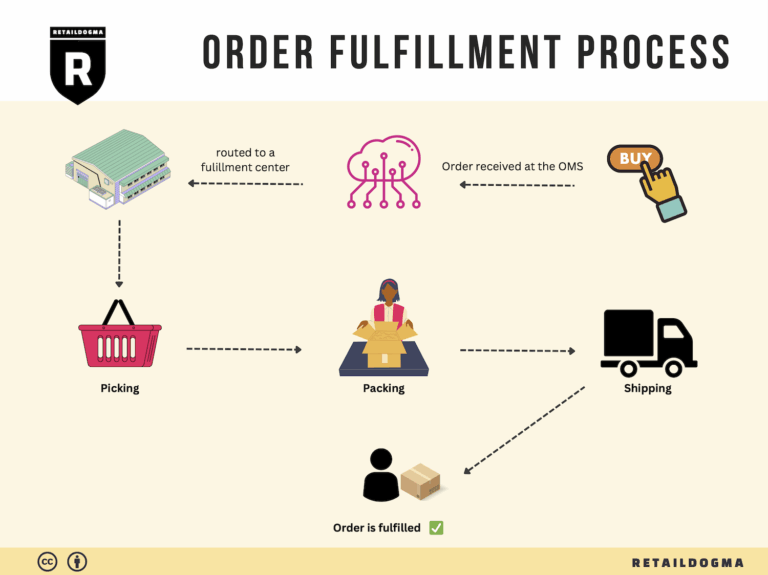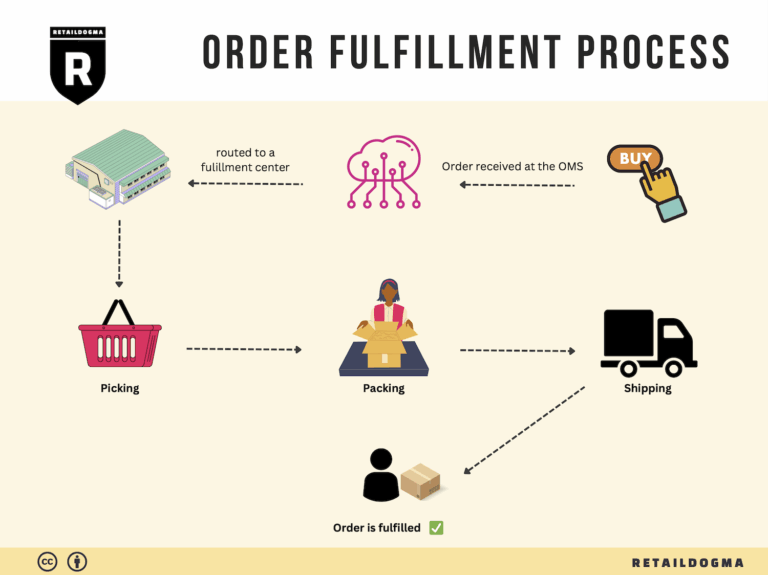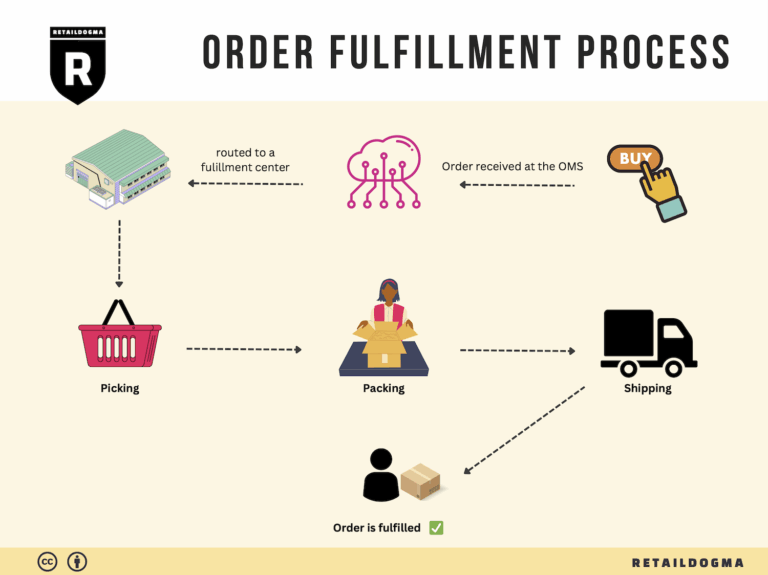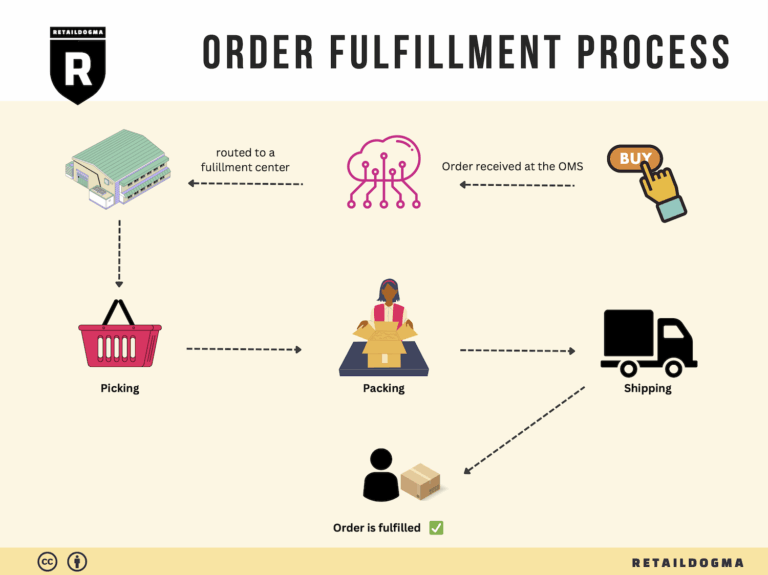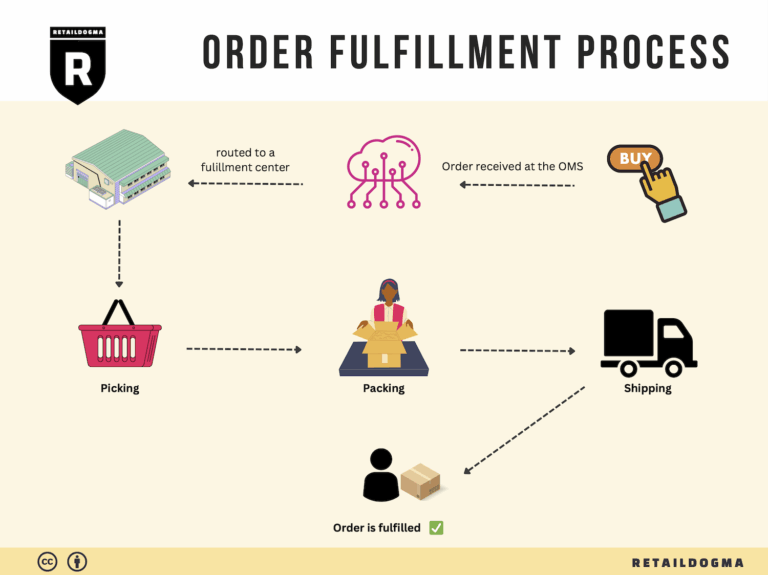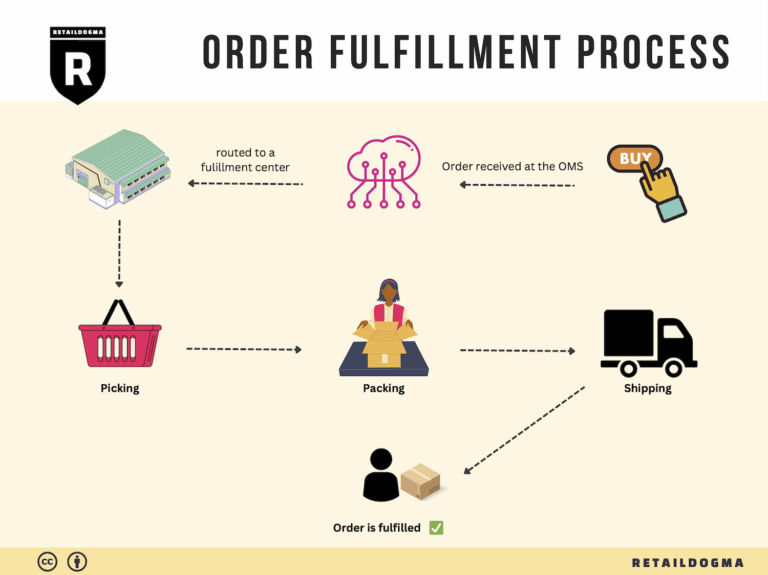Ecommerce Fulfillment Services: The Ultimate Guide (2025)
What is E-commerce Fulfillment? An Introduction for Growing Businesses
Understanding the Challenge of E-commerce Fulfillment
As a growing online business, one of the most daunting challenges you may face is the overwhelming task of packing and shipping orders. The excitement of acquiring new customers can quickly turn into a logistical nightmare as you grapple with inventory management, order processing, and timely deliveries. If not handled efficiently, these fulfillment tasks can detract from your core business activities, leading to customer dissatisfaction and lost sales opportunities.
Fulfillment, in its simplest form, refers to the process of getting a product from your inventory to your customer’s doorstep. This essential operation encompasses various steps, including order receipt, inventory storage, picking, packing, shipping, and handling returns. As your business scales, understanding the intricacies of fulfillment becomes critical to maintaining customer satisfaction and operational efficiency.
What This Guide Covers
In this comprehensive guide, we will delve into the different e-commerce fulfillment models available to growing businesses. You’ll learn about options such as Third-Party Logistics (3PL) providers and Fulfillment by Amazon (FBA), which can help streamline your operations. Each model has its own advantages and challenges, and we will provide insights to help you determine which option aligns best with your business goals.
We will also explore the core services offered by fulfillment partners, including inventory management, order processing, and shipping solutions. Understanding these services will enable you to assess potential partners based on their capabilities and how they can support your growth.
Choosing the right fulfillment partner is crucial for your business’s success. This guide will outline essential criteria to consider when selecting a partner, ensuring that you make informed decisions that align with your operational needs and customer expectations.
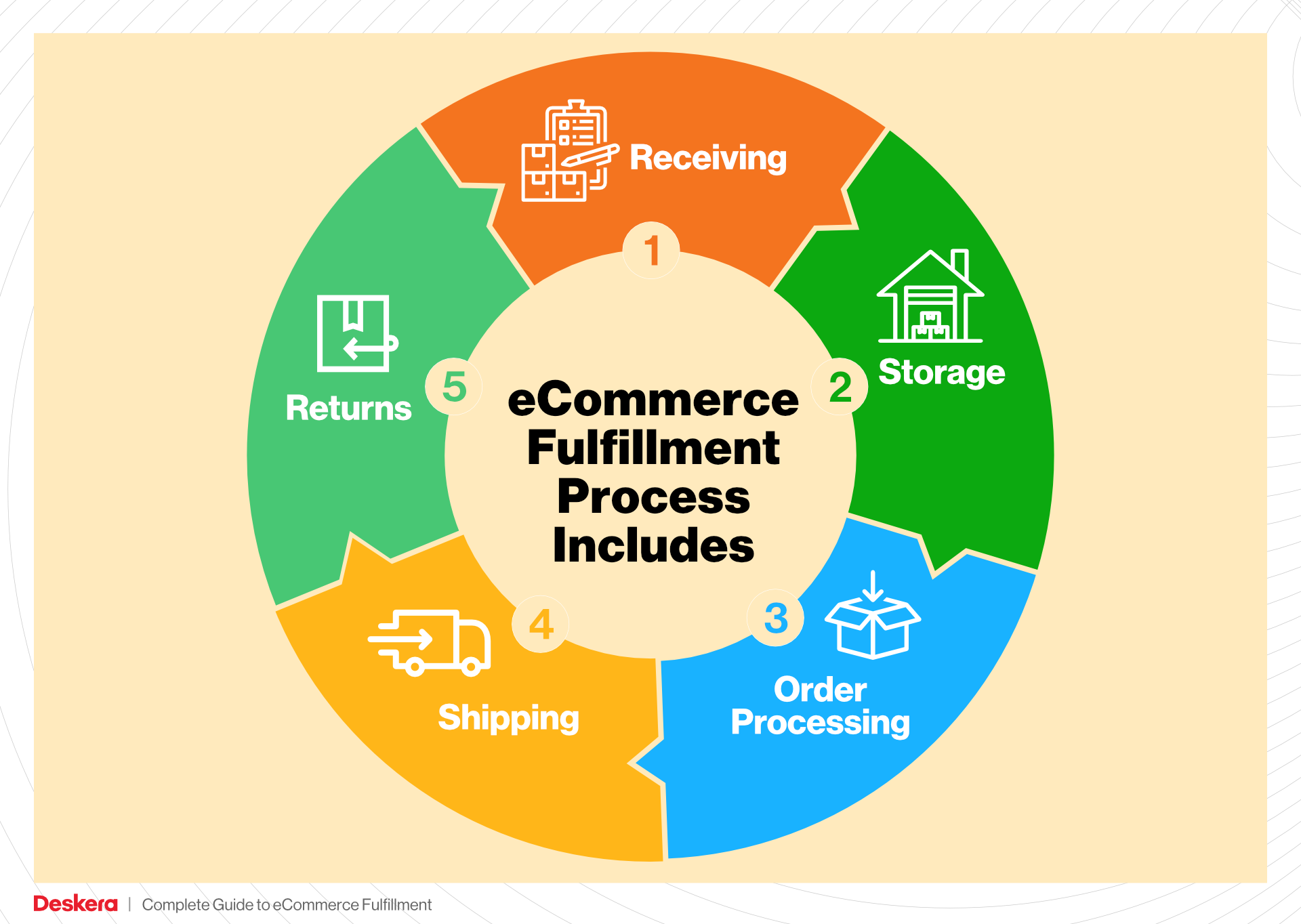
Finally, we will discuss pricing models commonly used in the fulfillment industry, helping you understand the costs associated with various services and how to budget effectively.
Empowering Your Logistics Decisions
Our goal with this guide is to empower you to make smart decisions regarding your logistics and fulfillment strategies. By understanding the different options and services available, you can optimize your fulfillment process, reduce stress, and focus on growing your e-commerce business. With the right knowledge and support, you can enhance customer satisfaction and drive long-term success in the competitive online marketplace.
What You’ll Learn In This Guide
- What is E-commerce Fulfillment? An Introduction for Growing Businesses
- The Order Fulfillment Process: From ‘Buy’ Button to Customer’s Door
- Comparing Fulfillment Models: In-House vs. 3PL vs. Dropshipping
- A Deep Dive into Amazon FBA: Pros, Cons, and Who It’s For
- Core Services Offered by Fulfillment Centers
- How to Choose a Fulfillment Partner: A 6-Point Checklist
- Understanding Fulfillment Pricing: A Breakdown of Common Fees
- Frequently Asked Questions (FAQs) about Fulfillment
- Conclusion: Is Outsourcing Fulfillment the Right Move for Your Business?
- Important Disclaimer
The Order Fulfillment Process: From ‘Buy’ Button to Customer’s Door
1. Receiving Inventory
The first step in the order fulfillment process is receiving inventory. This involves accepting shipments from suppliers or manufacturers and ensuring that the correct items and quantities are delivered. Upon arrival, each item is inspected for quality and accuracy, and discrepancies are logged.
Importance: Proper inventory receiving is critical because it sets the foundation for the entire fulfillment process. Errors at this stage can lead to stockouts, excess inventory, or fulfillment delays, all of which can negatively impact customer satisfaction.
Key Term: SKU (Stock Keeping Unit) – Each product is assigned a unique SKU, which helps in tracking inventory levels and managing stock efficiently. Using SKUs ensures that the right products are received and stored correctly.
2. Warehouse Storage
Once inventory has been received and verified, the next step is warehouse storage. This involves organizing the items in the warehouse for easy access and efficient order processing. Products are stored in designated locations based on various factors, such as size, demand, and type.
Importance: Effective warehouse storage maximizes space utilization and minimizes picking time. A well-organized warehouse allows for faster order fulfillment, reducing the time it takes to get products to customers. Poor storage practices can lead to confusion, misplaced items, and ultimately, slower service.
Key Term: ABC Analysis – This inventory categorization technique ranks products based on their importance and sales volume. ‘A’ items are high-value and low-quantity, ‘B’ items are moderate in both, and ‘C’ items are low-value and high-quantity. This helps prioritize storage and picking strategies.
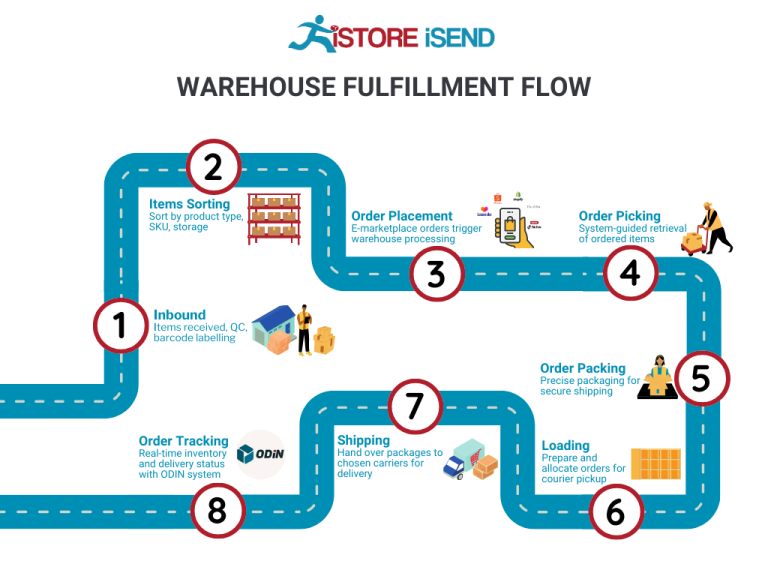
3. Order Picking
Order picking is the process of selecting items from the warehouse to fulfill customer orders. Workers use a variety of methods, such as pick lists, to gather the necessary products. Technology, such as barcode scanners or automated picking systems, can also be utilized to enhance accuracy and efficiency.
Importance: This step is pivotal because it directly influences order accuracy and fulfillment speed. Mistakes in order picking can lead to customer dissatisfaction, returns, and increased operational costs. Therefore, accuracy in this phase is essential for maintaining customer trust and loyalty.
Key Term: Pick List – A document that outlines the items and quantities required for each order. It serves as a roadmap for pickers, ensuring they gather the correct products efficiently.
4. Order Packing
After the items are picked, they must be packed for shipment. During this step, products are carefully placed into boxes or containers, with protective materials added as needed to prevent damage during transit. Packing slips and invoices are also included in the shipment.
Importance: Proper packing is vital to ensure that products arrive at the customer’s location in perfect condition. It also plays a role in branding; well-packed orders reflect professionalism and care. Additionally, packing efficiency can reduce shipping costs, as lighter and more compact packages tend to be cheaper to send.
Key Term: Packing Slip – A document included with the shipment that lists the items in the package. It serves as a confirmation for both the seller and the customer, helping to verify that the correct items have been sent.
5. Shipping & Delivery
The final step in the order fulfillment process is shipping and delivery. Once packed, orders are labeled and handed off to carriers for transportation. This stage involves selecting the appropriate shipping method based on factors such as cost, speed, and customer preferences.

Importance: Timely and accurate delivery is the culmination of the entire fulfillment process. It is a key determinant of customer satisfaction, as delays or errors in delivery can lead to frustration and lost business. Effective shipping strategies can enhance customer experience and foster repeat purchases.
Key Term: Last-Mile Delivery – This term refers to the final leg of the delivery process where the package is transported from a distribution center to the customer’s doorstep. Optimizing last-mile delivery is crucial for meeting customer expectations regarding delivery speed and reliability.
In conclusion, understanding and optimizing each step of the order fulfillment process—from receiving inventory to last-mile delivery—can significantly enhance operational efficiency and customer satisfaction for e-commerce businesses. By focusing on these critical areas, entrepreneurs and operations managers can scale their logistics effectively, ensuring that customers receive their orders promptly and accurately.
Comparing Fulfillment Models: In-House vs. 3PL vs. Dropshipping
Comparison of Fulfillment Models
| Model | Who Handles Inventory | Best For (Business Stage) | Key Advantage | Key Disadvantage |
|---|---|---|---|---|
| In-House Fulfillment | Business itself | Established businesses with stable sales | Full control over inventory and processes | Higher operational costs and complexity |
| Third-Party Logistics (3PL) | External logistics provider | Growing businesses seeking scalability | Reduced operational burden and access to expertise | Less control over inventory and processes |
| Dropshipping | Supplier or manufacturer | Startups and businesses testing markets | Low upfront investment and risk | Lower profit margins and reliance on suppliers |
In-House Fulfillment
In-house fulfillment involves managing the entire order fulfillment process within the company’s own facilities. This model is ideal for established businesses that have stable sales and a clear understanding of their inventory needs. By handling the inventory themselves, companies maintain complete control over their stock, allowing for tailored processes that can be optimized for efficiency and customer satisfaction. This control translates into the ability to manage product quality, customize packaging, and provide personalized customer service, enhancing the overall brand experience. However, the key disadvantage of in-house fulfillment is the operational complexity and higher costs associated with staffing, warehousing, and technology investments. As a business scales, maintaining efficiency in inventory management can become increasingly challenging, necessitating a strategic approach to resource allocation.
Third-Party Logistics (3PL)
Third-party logistics (3PL) providers offer a comprehensive solution for businesses looking to outsource their logistics and fulfillment needs. This model is particularly beneficial for growing businesses that require scalability without the burden of managing logistics internally. By partnering with a 3PL, companies can leverage the provider’s expertise in warehousing, inventory management, and shipping. This not only reduces operational burdens but also allows businesses to focus on core activities such as product development and marketing. The flexibility of 3PL services means that businesses can easily adjust their logistics strategies as they scale, accommodating seasonal fluctuations in demand. However, the downside is that companies may experience reduced control over their inventory and fulfillment processes, which can lead to challenges in maintaining quality standards and ensuring timely deliveries. It’s crucial for businesses to carefully select a reliable 3PL partner to mitigate these risks.
Dropshipping
Dropshipping is a fulfillment model where the retailer does not keep products in stock but instead transfers customer orders and shipment details directly to a supplier or manufacturer, who then ships the products directly to the customer. This model is particularly suitable for startups and businesses looking to test new markets or product lines with minimal upfront investment. The primary advantage of dropshipping is the low financial risk; businesses do not need to invest in inventory upfront, making it easier to launch and scale operations without significant capital. However, dropshipping also comes with challenges, including lower profit margins due to reliance on suppliers for pricing and inventory management. Additionally, businesses may face issues with product quality and shipping delays, as they have limited control over the fulfillment process. Successful dropshipping requires careful supplier selection and a strong focus on customer service to manage expectations effectively.
In conclusion, choosing the right fulfillment model depends on various factors, including business size, growth stage, and operational capabilities. Each model offers unique advantages and challenges that can significantly impact overall efficiency and customer satisfaction. Business owners should assess their specific needs and market conditions to make an informed decision that aligns with their strategic goals.
A Deep Dive into Amazon FBA: Pros, Cons, and Who It’s For
Understanding Fulfillment by Amazon (FBA)
Fulfillment by Amazon (FBA) is a service offered by Amazon that allows sellers to store their products in Amazon’s fulfillment centers. Amazon then takes care of storage, packaging, and shipping to customers, along with handling customer service and returns. This service enables sellers to leverage Amazon’s vast logistics network and customer base, simplifying the e-commerce process significantly.
How FBA Works
-
Setup: Sellers create an Amazon seller account and enroll in FBA. They then prepare their products according to Amazon’s guidelines.
-
Shipping Inventory: Sellers send their inventory to Amazon’s fulfillment centers. They can choose to ship to one or multiple centers, depending on their strategy.
-
Storage: Once received, Amazon stores the products in their warehouses until a customer orders them.
-
Order Fulfillment: When a customer places an order, Amazon picks, packs, and ships the product on behalf of the seller. This includes providing tracking information and managing customer service inquiries.
-
Returns Management: Amazon also handles returns, making it easier for sellers to manage customer satisfaction.
Pros of Using FBA
-
Prime Eligibility: Products fulfilled through FBA are automatically eligible for Amazon Prime, which can significantly increase visibility and sales. Prime members are more likely to purchase items that come with fast, free shipping.
-
Customer Trust: Utilizing FBA can enhance a seller’s credibility. Customers trust Amazon’s logistics and customer service, leading to higher conversion rates.
-
Multi-Channel Fulfillment: FBA allows sellers to fulfill orders from other sales channels, such as their own websites or eBay. This means sellers can centralize their inventory and streamline operations.
-
Scalability: FBA is designed to scale with your business. As sales increase, Amazon’s infrastructure can support higher volumes without requiring sellers to invest in their own logistics.
-
Time Savings: By outsourcing storage, packing, and shipping, sellers can focus on other aspects of their business, such as marketing, product development, and customer engagement.
Cons of Using FBA
-
High Fees: FBA comes with various fees, including storage fees for inventory and fulfillment fees based on the size and weight of the products. These costs can accumulate quickly and significantly impact margins.
-
Strict Inventory Rules: Amazon has specific requirements for inventory management, including restrictions on certain products and guidelines for packaging. Sellers must comply with these rules to avoid penalties or account suspension.
-
Commingling Risks: FBA operates on a commingled inventory model, meaning that inventory from multiple sellers can be mixed together. This can lead to issues if products are damaged or if there are discrepancies in quality, potentially affecting seller ratings.
-
Loss of Control: By relying on Amazon for fulfillment, sellers may have less control over the customer experience. Factors like shipping times and packaging can impact brand perception.
-
Inventory Management Challenges: Sellers must keep a close eye on inventory levels to avoid long-term storage fees or stockouts, which can hinder sales.
Who is FBA Best For?
FBA is particularly beneficial for:
-
Startups and Small Businesses: Entrepreneurs looking to enter the e-commerce space without the burden of managing logistics can leverage FBA for quick market entry.
-
Established Brands: Brands seeking to expand their reach and improve customer trust can benefit from the visibility and credibility that comes with FBA.
-
Sellers with Seasonal Products: Businesses that experience fluctuating sales volumes can take advantage of FBA’s scalability without investing in their own fulfillment infrastructure.
-
Multi-Channel Sellers: For businesses selling across various platforms, FBA provides a streamlined solution for inventory management and order fulfillment.
-
Sellers Seeking to Save Time: Those looking to focus on growth strategies rather than day-to-day logistics can benefit from outsourcing fulfillment to Amazon.
Conclusion
Fulfillment by Amazon offers a robust solution for e-commerce sellers looking to simplify their logistics operations while leveraging Amazon’s extensive reach and customer trust. However, it’s crucial for businesses to weigh the pros and cons carefully. High fees and strict inventory rules can pose challenges, but for many sellers, the benefits of Prime eligibility, customer trust, and scalability make FBA an attractive option. Ultimately, the decision to use FBA should align with your business goals, product type, and operational capacity.
Core Services Offered by Fulfillment Centers
Inventory Management & Warehousing
Inventory management and warehousing are foundational services provided by fulfillment centers. This involves the systematic tracking of inventory levels, orders, sales, and deliveries, all while securely storing products until they are needed.
What It Is: Fulfillment centers utilize advanced inventory management systems that allow businesses to monitor stock levels in real-time. These systems help in forecasting demand, automating reorder processes, and maintaining optimal stock levels. Warehousing is designed to store products safely and efficiently, often featuring climate control and security measures.
Benefits: For e-commerce businesses, effective inventory management minimizes the risk of stockouts or overstocking, both of which can be costly. By leveraging a fulfillment center’s expertise, businesses can ensure that they have the right amount of product on hand, reducing holding costs and improving cash flow. Additionally, centralized warehousing allows for quicker shipping times, which enhances customer satisfaction and loyalty.
Pick and Pack Services
Pick and pack services are integral to the fulfillment process, focusing on the preparation of orders for shipment. This involves selecting items from inventory (picking) and then packing them securely for delivery.
What It Is: In a typical pick and pack operation, once an order is placed, fulfillment center staff retrieve the ordered items from the warehouse shelves. They then pack these items into boxes, ensuring they are adequately protected during transit. This process may also include labeling and documentation for shipping.
Benefits: The primary advantage of pick and pack services is efficiency. Fulfillment centers have trained staff and streamlined processes that can significantly reduce the time from order placement to shipping. This not only speeds up delivery times but also decreases the likelihood of errors, such as sending the wrong items. For e-commerce businesses, quicker turnaround times can lead to higher customer satisfaction and repeat purchases.
Kitting and Assembly
Kitting and assembly services are particularly valuable for e-commerce businesses that sell products requiring assembly or bundling.
What It Is: Kitting involves combining multiple items into a single package or kit. For example, a fulfillment center may take individual components of a product (like a bike) and assemble them into a complete unit ready for sale. Assembly services may also include creating promotional bundles or special offers that combine various products.
Benefits: Kitting and assembly can streamline operations and enhance product offerings. By outsourcing these tasks to a fulfillment center, businesses can focus on core activities like marketing and product development. Additionally, offering kitted products can increase perceived value and drive higher sales, as customers often appreciate the convenience of bundled offerings. This service can also reduce the time customers spend assembling products themselves, leading to a more positive buying experience.
Returns Management (Reverse Logistics)
Returns management, or reverse logistics, is a crucial aspect of e-commerce fulfillment that deals with the process of handling returned merchandise.
What It Is: This service encompasses all activities related to the return of products from customers back to the fulfillment center. It includes processing returns, inspecting items, restocking inventory, and managing refunds or exchanges. Fulfillment centers often have dedicated teams and systems to handle returns efficiently.
Benefits: Effective returns management is vital for maintaining customer satisfaction and loyalty. A streamlined process makes it easy for customers to return items, which can reduce frustration and improve their overall experience with the brand. Additionally, efficient returns processing can help businesses recapture revenue by restocking items that are still sellable. For e-commerce businesses, having a robust returns management system can differentiate them from competitors and enhance brand reputation.
Conclusion
In the competitive landscape of e-commerce, partnering with a fulfillment center can provide significant advantages through core services such as inventory management, pick and pack, kitting and assembly, and returns management. By leveraging these services, businesses can streamline their operations, reduce costs, and enhance customer satisfaction, ultimately driving growth and success in their e-commerce endeavors.
How to Choose a Fulfillment Partner: A 6-Point Checklist
Location & Warehouse Network
The geographical placement of your fulfillment partner’s warehouses is crucial for efficient logistics. A strategically located warehouse network can significantly reduce shipping times and costs, improving customer satisfaction and potentially lowering your overall logistics expenses.
Questions to Ask:
– Where are your warehouses located, and how do they align with my target customer base?
– Do you have multiple locations to facilitate faster shipping options (e.g., same-day, next-day)?
– What shipping carriers do you work with, and how do they affect delivery times and costs?
Technology & Integrations
In today’s digital age, technology plays a pivotal role in the efficiency of fulfillment operations. A partner that utilizes advanced technology can provide real-time inventory management, order tracking, and seamless integration with your e-commerce platform.
Questions to Ask:
– What technology platforms do you use for order management and inventory tracking?
– Can your systems integrate with my existing e-commerce platform and other tools (e.g., CRM, ERP)?
– How do you ensure data security and compliance with industry regulations?
Specializations (e.g., Cold Storage, Oversized Items)
Not all fulfillment centers are equipped to handle specialized inventory. If your products require specific handling, such as cold storage for perishables or special accommodations for oversized items, ensure that your partner can meet these needs.
Questions to Ask:
– Do you have facilities for specialized inventory, such as cold storage or oversized items?
– What processes do you have in place for handling fragile or high-value items?
– Can you accommodate seasonal fluctuations in demand for specialized products?
Scalability & Capacity
As your business grows, so will your fulfillment needs. It’s essential to partner with a fulfillment provider that can scale operations to meet increasing demand without compromising service quality.
Questions to Ask:
– What is your current capacity, and how have you handled peak seasons in the past?
– How quickly can you scale operations in response to a sudden increase in order volume?
– Are there any limitations to your scalability, such as geographic restrictions or resource constraints?
Pricing and Contracts
Understanding the pricing structure and contract terms is vital for budgeting and financial planning. Transparent pricing helps avoid unexpected costs that can eat into your margins.
Questions to Ask:
– What is your pricing model (e.g., per order, per item, monthly fees)?
– Are there additional fees for services such as storage, packaging, or special handling?
– What are the terms of the contract, and is there flexibility for renegotiation as my business evolves?
Customer Support & Reviews
The level of customer support your fulfillment partner provides can make a significant difference in your overall satisfaction. A responsive and knowledgeable support team can help resolve issues quickly, minimizing disruptions to your operations.
Questions to Ask:
– What customer support channels do you offer (e.g., phone, email, chat)?
– How do you handle order issues or customer complaints?
– Can you provide references or testimonials from current or past clients?
Conclusion
Choosing the right fulfillment partner is a critical decision that can impact your e-commerce operations significantly. By considering these six essential points, you can make an informed decision that aligns with your business goals and enhances your ability to scale effectively. A thorough vetting process will not only help you find a partner that meets your current needs but also one that can grow alongside your business, ensuring long-term success in an ever-evolving market.
Understanding Fulfillment Pricing: A Breakdown of Common Fees
Initial Setup Fees
When engaging with a fulfillment provider, one of the first costs you may encounter is the initial setup fee. This fee typically covers the costs associated with integrating your systems with the provider’s technology, including inventory management systems, order processing, and shipping software.
The setup fee can vary significantly depending on the complexity of your operations. For example, businesses with a high volume of SKUs or those requiring custom packaging solutions may face higher fees. Generally, you can expect a one-time fee ranging from a few hundred to several thousand dollars. It is essential to clarify what the setup fee includes, as some providers might charge separately for additional services such as training or system customization.
Receiving Fees
Receiving fees are charged when your inventory arrives at the fulfillment center. These fees cover the labor and resources needed to unload, inspect, and process your products into the warehouse system.
Typically calculated per pallet or per hour, receiving fees may vary based on the size and complexity of the shipment. For instance, if your shipment includes large or heavy items, it may incur additional costs. Additionally, if your products require special handling or inspection, be prepared for higher fees. On average, receiving fees can range from $20 to $50 per pallet, but it’s crucial to discuss specifics with your provider to ensure transparency.
Storage Fees (per pallet/bin)
Storage fees are recurring charges that apply for keeping your inventory in the fulfillment center. These fees are usually calculated based on the space your products occupy, measured in pallets or bins, and are typically billed monthly.
The cost per pallet can vary based on the location of the fulfillment center and the nature of your products. For example, items that are perishable or require climate control may incur higher storage fees. On average, storage fees can range from $10 to $30 per pallet per month. It is vital to monitor your inventory levels closely, as excess stock can lead to increased storage costs, impacting your bottom line.
Pick & Pack Fees (per item/order)
Pick and pack fees are charged for the labor involved in selecting items from storage and packing them for shipment. This fee is critical for e-commerce businesses, as it directly impacts the efficiency of order fulfillment.
These fees are generally calculated on a per-item or per-order basis. For instance, if your fulfillment provider charges $1.00 per item, an order containing five items would incur a $5.00 pick and pack fee. Some providers offer tiered pricing, where the cost per item decreases as the volume of orders increases. Understanding your order patterns can help you negotiate better rates. On average, pick and pack fees can range from $0.50 to $3.00 per item.
Shipping Fees
Shipping fees are perhaps the most variable costs in the fulfillment pricing model, as they depend on several factors, including the shipping method, package dimensions, weight, and destination. Fulfillment providers often partner with multiple carriers, which allows for competitive shipping rates.
Shipping fees can be calculated based on flat rates, weight-based pricing, or distance-based pricing, depending on the fulfillment center’s policies. Many providers offer discounted rates through carrier partnerships, which can be beneficial for your business. It’s essential to understand how shipping fees are calculated to avoid unexpected costs. On average, shipping fees can range from $5.00 to $15.00 for standard ground shipping, but this can vary widely based on the specifics of each order.
Tips for Getting an Accurate Quote
-
Be Transparent About Your Needs: Provide detailed information about your inventory, order volume, and specific requirements to get a tailored quote.
-
Ask for a Detailed Breakdown: Request a line-item breakdown of all potential fees, including setup, receiving, storage, pick and pack, and shipping. This transparency helps avoid hidden costs.
-
Consider Seasonal Fluctuations: If your business experiences seasonal spikes in demand, discuss how these fluctuations might affect your pricing structure.
-
Negotiate Rates: Don’t hesitate to negotiate pricing, especially if you anticipate high order volumes. Many providers are willing to offer discounts for long-term contracts.
-
Request Case Studies or References: Ask for examples of how the fulfillment provider has worked with businesses similar to yours. This can give you insights into potential costs and service levels.
By understanding these common fulfillment fees and their calculations, e-commerce business owners can make informed decisions that help optimize their logistics and ultimately scale their operations effectively.
Frequently Asked Questions (FAQs) about Fulfillment
1. What is fulfillment in e-commerce?
Fulfillment in e-commerce refers to the complete process of receiving, processing, and delivering orders to customers. It encompasses inventory management, order processing, packaging, shipping, and handling returns. Effective fulfillment is crucial for customer satisfaction and operational efficiency.
2. What’s the difference between a warehouse and a fulfillment center?
A warehouse primarily serves as a storage facility for goods, focusing on inventory management and bulk storage. In contrast, a fulfillment center is specifically designed for the efficient processing of orders. Fulfillment centers handle picking, packing, shipping, and often returns, making them integral to e-commerce operations.
3. What is a 3PL?
A 3PL, or third-party logistics provider, is a company that offers outsourced logistics services. This can include warehousing, fulfillment, shipping, and inventory management. E-commerce businesses often partner with 3PLs to leverage their expertise and infrastructure, allowing them to focus on core business activities while ensuring efficient order fulfillment.
4. How much do fulfillment services cost?
Fulfillment service costs vary based on factors such as order volume, storage space, and additional services like packaging and shipping. On average, businesses can expect to pay a combination of storage fees (typically per pallet or cubic foot), picking and packing fees (charged per order), and shipping costs (based on weight and destination). It’s advisable to request quotes from multiple providers to find a solution that fits your budget.
5. What are the key components of a fulfillment strategy?
A robust fulfillment strategy should include inventory management, order processing efficiency, shipping methods and costs, customer communication, and return handling. Additionally, leveraging technology for tracking and analytics can enhance decision-making and operational efficiency.
6. How can I improve my fulfillment process?
To improve your fulfillment process, consider implementing the following strategies:
– Automate where possible: Use software solutions for inventory management and order processing.
– Optimize your warehouse layout: Ensure that frequently picked items are easily accessible.
– Regularly review shipping options: Compare carriers to find the most cost-effective and reliable service.
– Enhance communication: Keep customers informed about their order status through automated emails or SMS updates.
7. What is the role of technology in fulfillment?
Technology plays a vital role in modern fulfillment processes by streamlining operations, reducing errors, and enhancing customer experience. Solutions like inventory management systems, order management systems, and shipping software can automate tasks, improve accuracy, and provide real-time data analytics to inform decision-making.
8. What are the benefits of using a fulfillment service?
Using a fulfillment service can provide several benefits, including:
– Scalability: Easily scale operations to meet demand without the need for significant investment in infrastructure.
– Cost savings: Reduce overhead costs related to warehousing, staffing, and shipping.
– Focus on core business: Allow businesses to concentrate on marketing and sales while outsourcing logistics.
– Expertise: Leverage the expertise of logistics professionals to enhance efficiency and customer satisfaction.
9. How do I choose the right fulfillment partner?
When selecting a fulfillment partner, consider the following factors:
– Experience and reputation: Look for providers with a proven track record in your industry.
– Services offered: Ensure they provide the specific services your business needs, such as international shipping or special handling.
– Technology capabilities: Evaluate their technology for inventory management and order tracking.
– Location: Proximity to key markets can affect shipping times and costs.
– Cost structure: Understand their pricing model and ensure it aligns with your budget and growth plans.
10. What are common challenges in fulfillment?
Common challenges in fulfillment include:
– Inventory management: Maintaining optimal stock levels to meet demand without overstocking.
– Order accuracy: Ensuring that orders are picked and packed correctly to minimize returns and customer dissatisfaction.
– Shipping delays: Managing logistics and carrier issues to avoid delays in delivery times.
– Returns management: Efficiently handling returns can be complex and resource-intensive. Addressing these challenges requires continuous improvement and investment in technology and processes.
Conclusion: Is Outsourcing Fulfillment the Right Move for Your Business?
Evaluating the Benefits of Outsourcing Fulfillment
Outsourcing fulfillment can be a transformative strategy for e-commerce businesses looking to scale efficiently. One of the most significant advantages is the time saved; by delegating logistics, inventory management, and order processing to a specialized partner, business owners can focus on core activities such as marketing, product development, and customer engagement. This shift not only enhances productivity but also fosters innovation and strategic growth.
Scalability is another critical benefit. As your business experiences growth, the demands on your fulfillment operations can increase dramatically. A proficient fulfillment partner can seamlessly adjust to fluctuations in order volume, whether during peak seasons or product launches, without the need for substantial capital investment in infrastructure. This flexibility allows businesses to respond quickly to market changes, ensuring they remain competitive.
Additionally, expertise in logistics and supply chain management is a compelling reason to consider outsourcing. Fulfillment centers often leverage advanced technology, industry best practices, and experienced personnel to optimize shipping processes, reduce errors, and enhance customer satisfaction. By tapping into this expertise, businesses can achieve higher efficiency and improve their overall service quality.
However, the success of outsourcing fulfillment hinges on selecting the right partner. It’s crucial to evaluate potential fulfillment services based on their capabilities, reliability, and alignment with your business goals. A strategic partnership can drive growth and enhance your brand’s reputation in the long term.
Take Action Today
Now is the time to assess your current shipping and fulfillment processes. Conduct an audit of your operations to identify inefficiencies, bottlenecks, and areas where a fulfillment partner could add value. By understanding your needs and exploring the right options, you can make an informed decision that positions your business for future success. Don’t hesitate to explore fulfillment services that align with your vision for growth; it could be the pivotal move that propels your business to new heights.
Important Disclaimer
⚠️ Important Disclaimer
The information in this guide is for educational purposes. Fulfillment services, pricing, and platform features change frequently. Always conduct your own due diligence and consult with providers directly before making business decisions.
